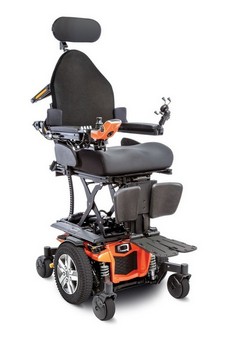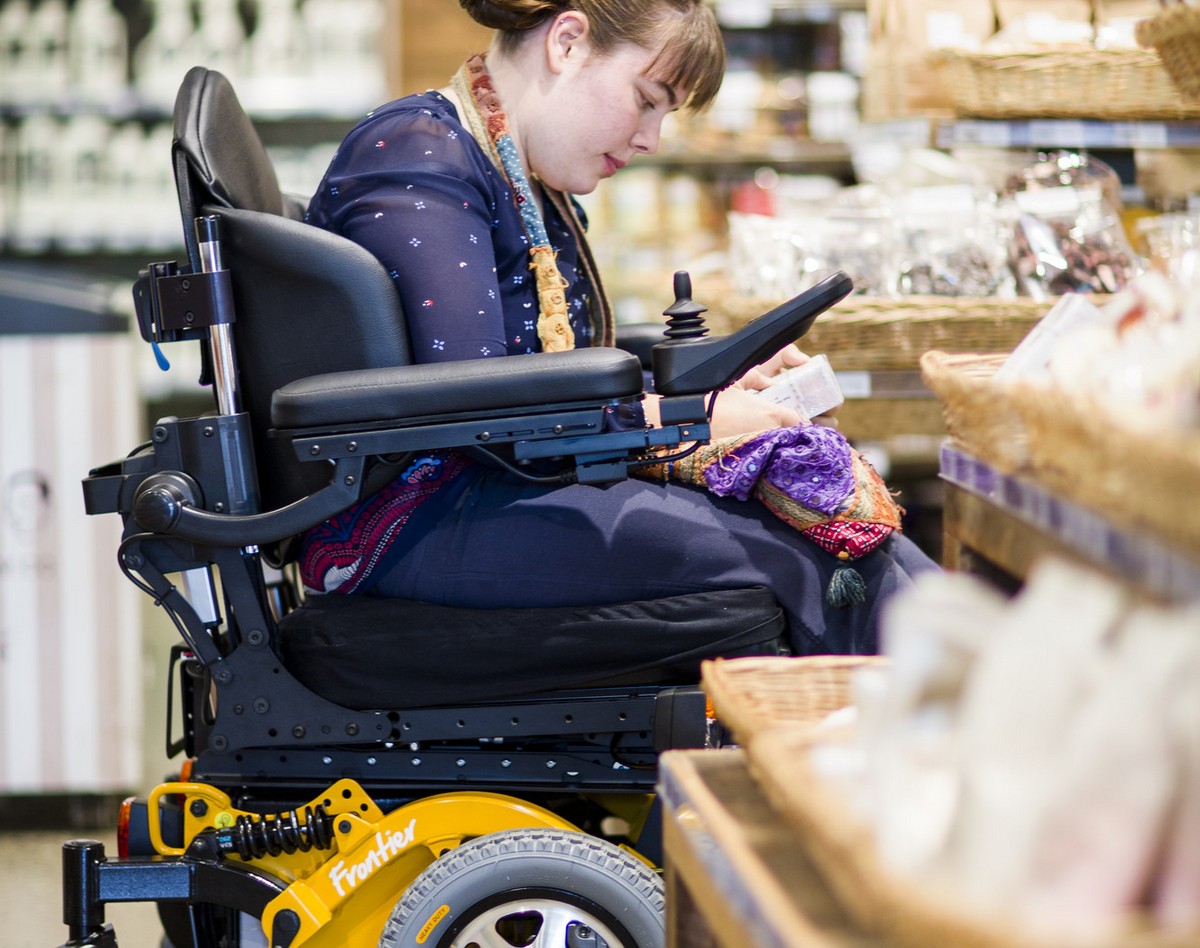One of the first things to consider when scripting a power wheelchair is what kind of base will work best for the client. But why is the base type, or the drive wheel location, so important?
The drive wheel location, be it rear, mid or front wheel drive, greatly impacts on how the wheelchair drives and performs in various environments, and how well the wheelchair will meet the client’s needs. When considering the different drive wheel locations, it’s important to identify where the client wants to use the wheelchair, the terrain they’ll be traversing, the layout of their home, school or other work environments, and whether the wheelchair will need to access certain vehicles.
Each drive wheel location has its benefits and possible downsides, and it’s important to understand these to assist your client to make the best choice for them.
Rear wheel drive (RWD)
Rear wheel drive power wheelchair bases have certain benefits that tend to work well for outdoor driving. They track well at higher speeds and generally have good suspension. There are some downsides to rear wheel drive chairs that result it this drive wheel location not being as popular as it once was, such as having the largest turning radius out of the three options, and typically having large swivelling front castors which can clash with footplates and legrests in certain configurations. However often people who have been using a rear wheel drive wheelchair for many years find them fantastic, so don’t discount them straight away.

Mid-wheel drive (MWD)
Mid-wheel drive is often a popular choice for two main reasons; it’s often intuitive to control for new power wheelchair users and is quite manoeuvrable.
In a mid-wheel drive power wheelchair, the drive wheels are located directly under the user and therefore the centre of gravity of the wheelchair is generally in line with the user’s trunk and head. This is similar to where our centre of gravity is when walking. For instance, when we walk and are turning a corner into a doorway, once our shoulders are level with the doorway we can start our turn. Likewise, in a mid-wheel drive power wheelchair, when the drive wheels and the user’s trunk are in line with the start of the doorway you can also begin the turn. For new power wheelchair users or users with reduced proprioception skills, this can make a mid-wheel drive wheelchair much more intuitive to control.
A mid-wheel drive wheelchair often has the smallest turning circle of the base types, as the wheelchair will turn within its own footprint. It has the best performance for 360° turns and can perform quick turns. It can be a great option for people that are using their wheelchair in a tight environment because of its manoeuvrability.
Mid-wheel drive bases can sometimes have difficulty climbing obstacles, as it can ‘high centre’ in certain situations, which is where the front and rear castors remain on the ground when climbing the obstacle, but the mid wheel is suspended and traction is lost. This is a great reminder of the importance of trialling a wheelchair in the environments that it will be used in and checking the wheelchair will be able to be used successfully in all locations needed, including frequently used routes of travel.

Front wheel drive (FWD)
Front wheel drive bases have gained in popularity in recent years, and although it can take a little longer for users to learn the techniques for manoeuvring them there are often many benefits to this style of power base. Front wheel drive bases are superior at climbing obstacles, because the large front wheel provides better climbing ability. They generally handle well across all terrains and have good stability for power seating functions.
A front wheel drive wheelchair can be the most manoeuvrable base option in certain situations, particularly 90° turns like turning into a doorway from a narrow hallway as the wheelchair can ‘hug’ the corner. A front wheel drive base drives a little like a forklift where the turn occurs at the front of the wheelchair. This allows it to turn well in tight spaces, such as the spaces you would find a forklift in a warehouse negotiating.
Front wheel drive bases can accommodate tight hamstrings as the base design allows the legs to be tucked in without the risk of coming into contact with swivelling front castors. Front wheel drive can also work better with shorter seat depths, such as with paediatric clients, as the user can often be positioned with their weight over the drive wheel, offering improved traction and performance.
Previously, many front wheel drive wheelchairs had poor tracking at high speeds which led to the dreaded ‘fish tailing’ at higher speeds, however the newer generations of front wheel drive bases generally don’t experience this issues due to improved distribution of weight in the base and new tracking technology.

GTK are the experts in power wheelchair prescription. Contact us today to have a chat about what base might suit best or to organise a trial.



